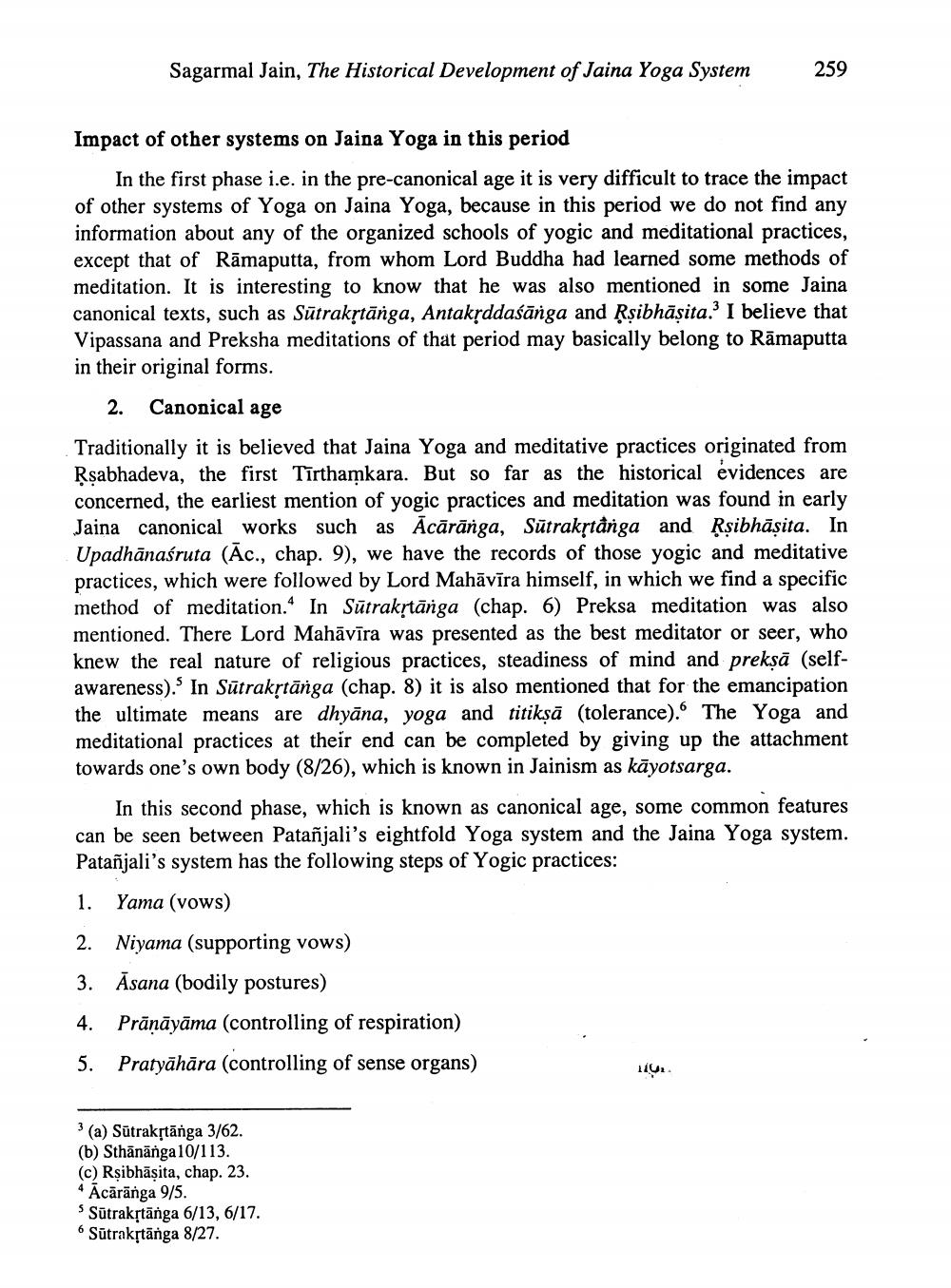________________
Sagarmal Jain, The Historical Development of Jaina Yoga System
259
Impact of other systems on Jaina Yoga in this period
In the first phase i.e. in the pre-canonical age it is very difficult to trace the impact of other systems of Yoga on Jaina Yoga, because in this period we do not find any information about any of the organized schools of yogic and meditational practices, except that of Rāmaputta, from whom Lord Buddha had learned some methods of meditation. It is interesting to know that he was also mentioned in some Jaina canonical texts, such as Sūtrakstānga, Antakyddaśānga and Rşibhāṣita. I believe that Vipassana and Preksha meditations of that period may basically belong to Rāmaputta in their original forms.
2. Canonical age Traditionally it is believed that Jaina Yoga and meditative practices originated from Ķsabhadeva, the first Tīrthamkara. But so far as the historical evidences are concerned, the earliest mention of yogic practices and meditation was found in early Jaina canonical works such as Ācārāṇga, Sūtrakstânga and Rsibhāșita. In Upadhānaśruta (Ac., chap. 9), we have the records of those yogic and meditative practices, which were followed by Lord Mahāvīra himself, in which we find a specific method of meditation. In Sūtrakṛtānga (chap. 6) Preksa meditation was also mentioned. There Lord Mahāvīra was presented as the best meditator or seer, who knew the real nature of religious practices, steadiness of mind and prekṣā (selfawareness). In Sūtrakstānga (chap. 8) it is also mentioned that for the emancipation the ultimate means are dhyāna, yoga and titikṣā (tolerance). The Yoga and meditational practices at their end can be completed by giving up the attachment towards one's own body (8/26), which is known in Jainism as kāyotsarga.
In this second phase, which is known as canonical age, some common features can be seen between Patañjali's eightfold Yoga system and the Jaina Yoga system. Patañjali's system has the following steps of Yogic practices:
1. Yama (vows)
2. Niyama (supporting vows) 3. Āsana (bodily postures) 4. Prānāyāma (controlling of respiration) 5. Pratyāhāra (controlling of sense organs)
(a) Sūtrakstānga 3/62. (b) Sthānānga10/113. (c) Rşibhāṣita, chap. 23. * Acārānga 9/5.
Sūtrakstānga 6/13,6/17. 6 Sūtrakstānga 8/27.




